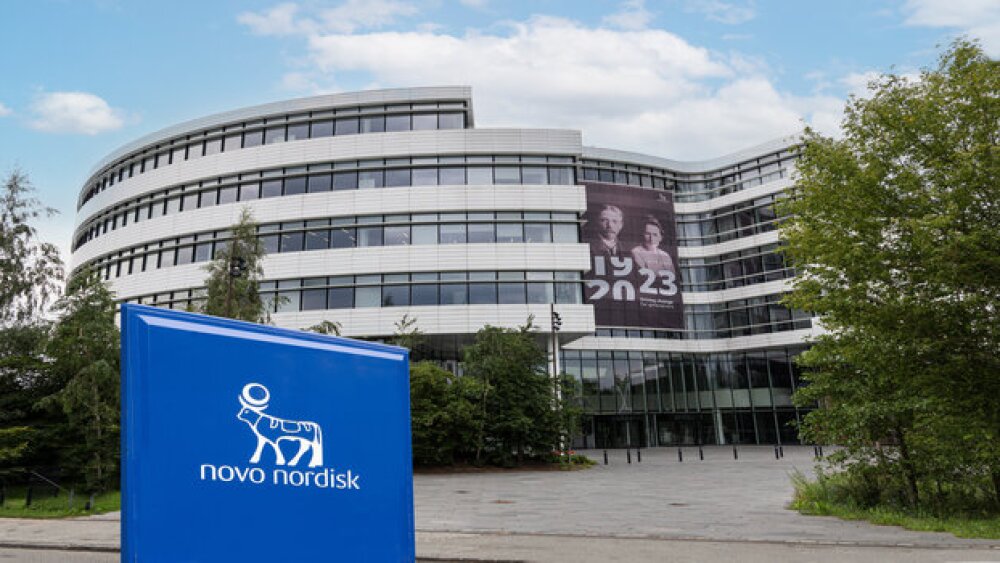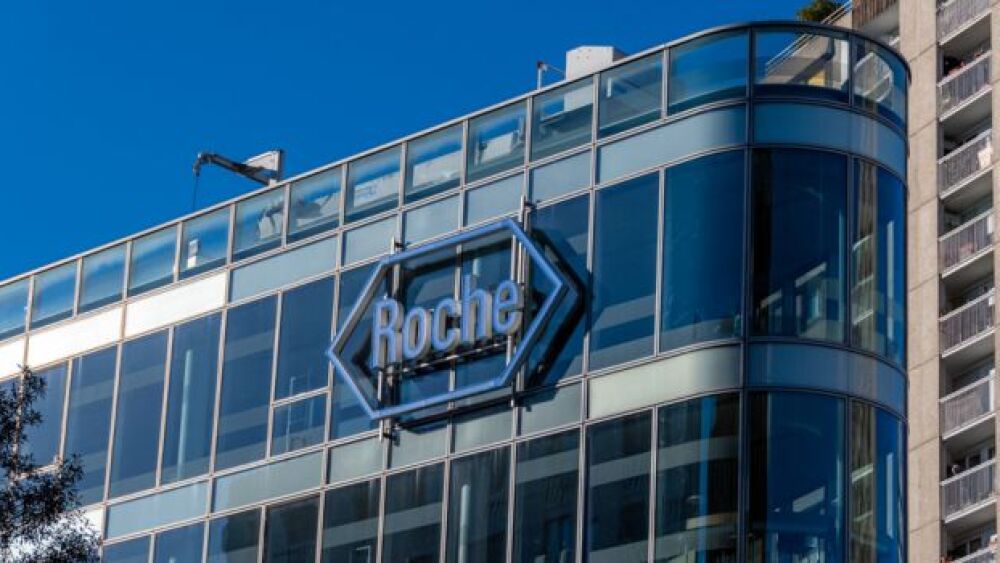ChemoCentryx, Inc., (Nasdaq: CCXI), today announced positive topline data from the Company’s AURORA randomized, double-blind, placebo-controlled, multi-center Phase II clinical trial of avacopan for the treatment of the chronic disabling skin disease Hidradenitis Suppurativa (HS)
MOUNTAIN VIEW, Calif., Oct. 28, 2020 (GLOBE NEWSWIRE) -- ChemoCentryx, Inc. (Nasdaq: CCXI), today announced positive topline data from the Company’s AURORA randomized, double-blind, placebo-controlled, multi-center Phase II clinical trial of avacopan for the treatment of the chronic disabling skin disease Hidradenitis Suppurativa (HS). Avacopan is a first-in-class, orally-administered selective inhibitor of the complement C5a receptor.
The Phase II AURORA clinical trial randomized 398 patients to one of three treatment arms. The study population included patients with moderate HS (Hurley Stage II) or severe HS (Hurley Stage III), which were stratified evenly across the treatment groups. The primary endpoint of the proportion of all patients (both moderate Hurley Stage II plus severe Hurley Stage III) achieving Hidradenitis Suppurativa Clinical Response (HiSCR), as assessed 10 mg twice-daily (BID) and 30 mg BID dosing regimens of avacopan against placebo after 12 weeks of treatment in the combined study population, was not achieved with statistical significance at either dose level, although a numerical improvement was noted at the 30mg BID dose. Importantly, avacopan 30mg BID demonstrated a statistically significant higher response than placebo in the pre-specified population of Hurley Stage III (severe) HS patients in the study. The Company plans to advance avacopan into Phase III development for the treatment of severe HS.
Table 1: Hidradenitis Suppurativa Clinical Response (HiSCR) Results
| Placebo | Avacopan 10 mg BID | Avacopan 30 mg BID | |||||
| n/N (%) | n/N (%) | ∆ % | (95% CI) | n/N (%) | ∆ % | (95% CI) | |
| All | 40/130 (30.8) | 30/134 (22.4) | -8.2 | (-18.7, 2.4) | 47/134 (35.1) | 4.4 | (-6.9, 15.5) |
| Hurley Stage II | 30/85 (35.3) | 18/84 (21.4) | -13.8 | (-26.8, -0.2) | 27/87 (31.0) | -4.3 | (-18.1, 9.6) |
| Hurley Stage III | 10/45 (22.2) | 12/50 (24.0) | 1.8 | (-15.3, 18.3) | 20/47 (42.6) | 20.3* | (1.6, 37.9) |
*p=0.0349
A consistency of effect with avacopan was noted in Hurley Stage III patients across every secondary endpoint assessed to date. Favorable reductions for avacopan were observed in International HS Severity Score (IHS4), as well as reduction in AN (abscesses and inflammatory nodules), draining fistula, and abscess count at week 12 (all % change from baseline to week 12), relative to placebo.
Avacopan demonstrated a favorable safety profile. Treatment emergent adverse events (TEAEs) of all types were observed to be fewer in the avacopan groups (48.5%) than with placebo (55%). The majority of TEAEs were related to underlying HS and were mild to moderate. Serious TEAEs were observed in 2.3% of placebo patients vs. 1.5% on avacopan.
“The fact that avacopan was observed to bring relief to the most severely afflicted HS patients in this study simply cannot be ignored, and it defines our path forward,” said Thomas J. Schall, Ph.D., President and Chief Executive Officer of ChemoCentryx. “Hurley Stage III individuals lamentably must endure the worst manifestations of this mysterious and debilitating disease of HS, and at present their treatment options are vanishingly few. The potential for avacopan to become a new and effective oral therapy for these most severe HS patients is compelling. The clear demarcation between Hurley III and other less severe HS patients we believe provides both a clear clinical development as well as a registration path to bringing avacopan to this woefully underserved group. We have a blueprint from our recent success in the Phase III ADVOCATE trial where clear benefit was observed in another underserved patient population - ANCA vasculitis - and we intend to use it to expand the scope of avacopan’s benefit to severely afflicted HS patients as well.”
About Hidradenitis Suppurativa and the AURORA Trial
Hidradenitis Suppurativa (HS), also known as acne inversa, is a chronic disabling autoimmune skin disease characterized by recurrent, painful nodules, boils and abscesses.
The Phase II AURORA clinical trial randomized 398 patients with moderate-to-severe HS to one of three treatment arms. The primary endpoint assessed 10 mg BID and 30 mg BID dosing regimens of avacopan against placebo at 12 weeks of treatment, using the HiSCR scale. HiSCR response is defined as a ≥ 50% reduction in inflammatory lesion count (abscesses + inflammatory nodules), and no increase in abscesses or draining fistulas when compared with baseline. Secondary endpoints include percent improvement to week 12 between groups, the IHS4 (International Hidradenitis Suppurativa Severity Scoring System) reduction from baseline, and other validated secondary measurements.
Following the 12-week double-blind treatment period, the study will remain blinded. Patients on placebo were re-randomized to either the 10 mg BID or 30 mg avacopan BID dose group for an additional 24 weeks; patients treated with avacopan continued to receive the same dose (either 10 mg BID or 30 mg BID) for an additional 24 weeks. Patients will be followed for an additional 44 weeks for assessment of safety and efficacy.
About Avacopan
Avacopan is a first-in-class, orally-administered small molecule that employs a novel, highly targeted mode of action in the treatment of ANCA-associated vasculitis and other complement-driven autoimmune and inflammatory diseases. By precisely blocking the receptor (the C5aR) for the pro-inflammatory complement system fragment known as C5a on destructive inflammatory cells such as blood neutrophils, avacopan arrests the ability of those cells to do damage in response to C5a activation, which is known to be the driver of ANCA-associated vasculitis. Current therapies for ANCA-associated vasculitis and other related illnesses typically include broad immunosuppression with daily doses of glucocorticoids (steroids) such as prednisone or methylprednisone, which cause significant illness and even death. Avacopan therapy was designed to prevent these outcomes. Moreover, avacopan’s selective inhibition of only the C5aR leaves the beneficial C5a pathway through the C5L2 receptor functioning normally.
ChemoCentryx is also developing avacopan for the treatment of patients with ANCA-associated vasculitis and C3 glomerulopathy (C3G). The U.S. Food and Drug Administration has granted avacopan orphan drug designation for ANCA-associated vasculitis and C3G. The European Commission has granted orphan medicinal product designation for avacopan for the treatment of two forms of ANCA-associated vasculitis: microscopic polyangiitis and granulomatosis with polyangiitis (formerly known as Wegener’s granulomatosis), as well as for C3G.
Conference Call and Webcast Information
ChemoCentryx will host a conference call and webcast today, October 28, 2020 at 4:30 p.m. Eastern Time / 1:30 p.m. Pacific Time. To participate by telephone, please dial (877) 303-8028 (Domestic) or (760) 536-5167 (International). The conference ID number is 6339124. A live and archived audio webcast, along with a slide presentation, can be accessed through the Investors section of the Company’s website at www.ChemoCentryx.com. The archived webcast will remain available on the Company’s website following the conference call.
About ChemoCentryx
ChemoCentryx is a biopharmaceutical company developing new medications for inflammatory and autoimmune diseases and cancer. ChemoCentryx targets the chemokine and chemoattractant systems to discover, develop and commercialize orally-administered therapies. ChemoCentryx’s lead drug candidate, avacopan (CCX168), successfully completed a pivotal Phase III trial in ANCA-associated vasculitis.
ChemoCentryx also has early stage drug candidates that target chemoattractant receptors in other inflammatory and autoimmune diseases and in cancer.
Forward-Looking Statements
ChemoCentryx cautions that statements included in this press release that are not a description of historical facts are forward-looking statements. Words such as “may,” “could,” “will,” “would,” “should,” “expect,” “plan,” “anticipate,” “believe,” “estimate,” “intend,” “predict,” “seek,” “contemplate,” “potential,” “continue” or “project” or the negative of these terms or other comparable terminology are intended to identify forward-looking statements. These statements include the Company’s statements regarding the timing of an end of Phase 2 meeting with the FDA following the 12-week results from the AURORA study, whether there is a regulatory path forward for avacopan in the treatment of Hurley Stage III HS patients, the achievement of anticipated goals and milestones, whether avacopan will be an effective treatment in indications such as HS, C3G or lupus nephritis, when the C3G ACCOLADE clinical trial data might become available or be released, whether avacopan will enter clinical trials for the treatment of lupus nephritis in the first half of 2021, and whether the Company’s drug candidates will be shown to be effective in ongoing or future clinical trials. The inclusion of forward-looking statements should not be regarded as a representation by ChemoCentryx that any of its plans will be achieved. Actual results may differ from those set forth in this release due to the risks and uncertainties inherent in the ChemoCentryx business and other risks described in the Company’s filings with the Securities and Exchange Commission (“SEC”). Investors are cautioned not to place undue reliance on these forward-looking statements, which speak only as of the date hereof, and ChemoCentryx undertakes no obligation to revise or update this news release to reflect events or circumstances after the date hereof. Further information regarding these and other risks is included under the heading “Risk Factors” in ChemoCentryx’s periodic reports filed with the SEC, including ChemoCentryx’s Annual Report on Form 10-K filed with the SEC on March 10, 2020 and its other reports which are available from the SEC’s website (www.sec.gov) and on ChemoCentryx’s website (www.chemocentryx.com) under the heading “Investors.” All forward-looking statements are qualified in their entirety by this cautionary statement. This caution is made under the safe harbor provisions of Section 21E of the Private Securities Litigation Reform Act of 1995.
Contacts:
Susan M. Kanaya
Executive Vice President,
Chief Financial and Administrative Officer
investor@chemocentryx.com
Media:
Stephanie Tomei
408.234.1279
media@chemocentryx.com
Investors:
Burns McClellan, Inc.
Steve Klass
212.213.0006
sklass@burnsmc.com





